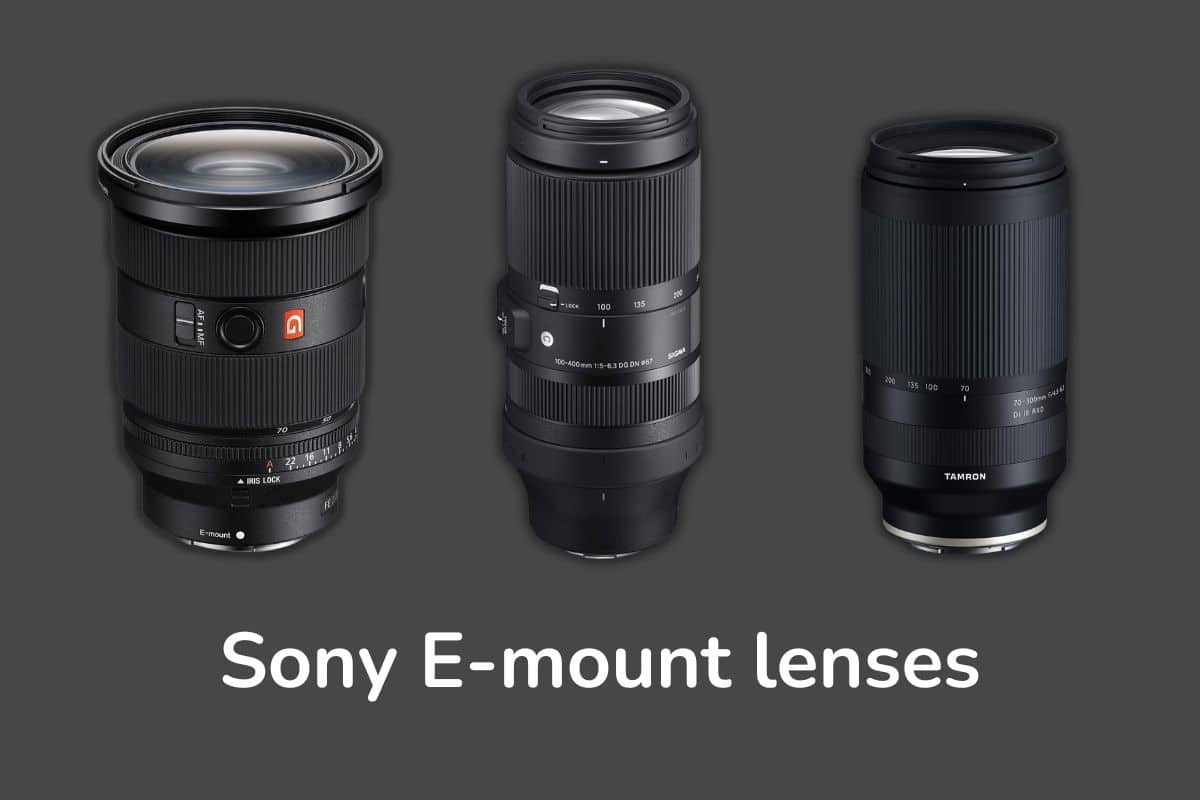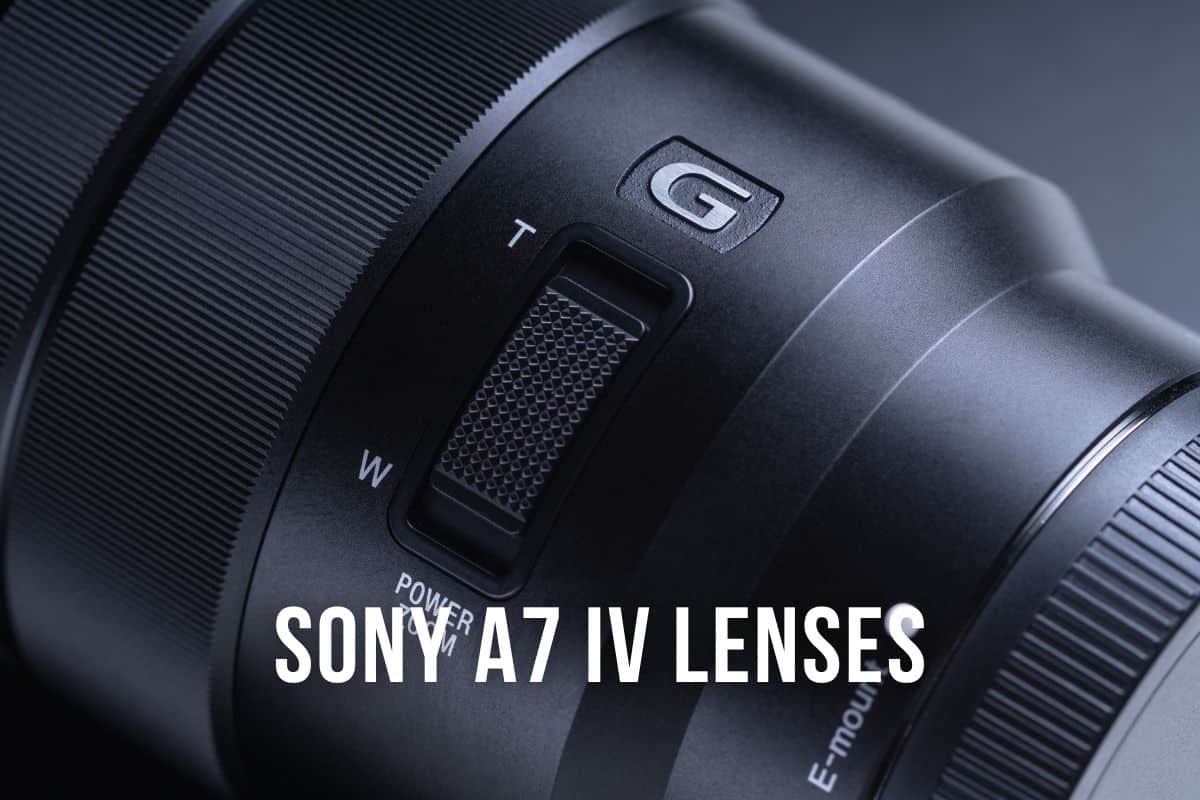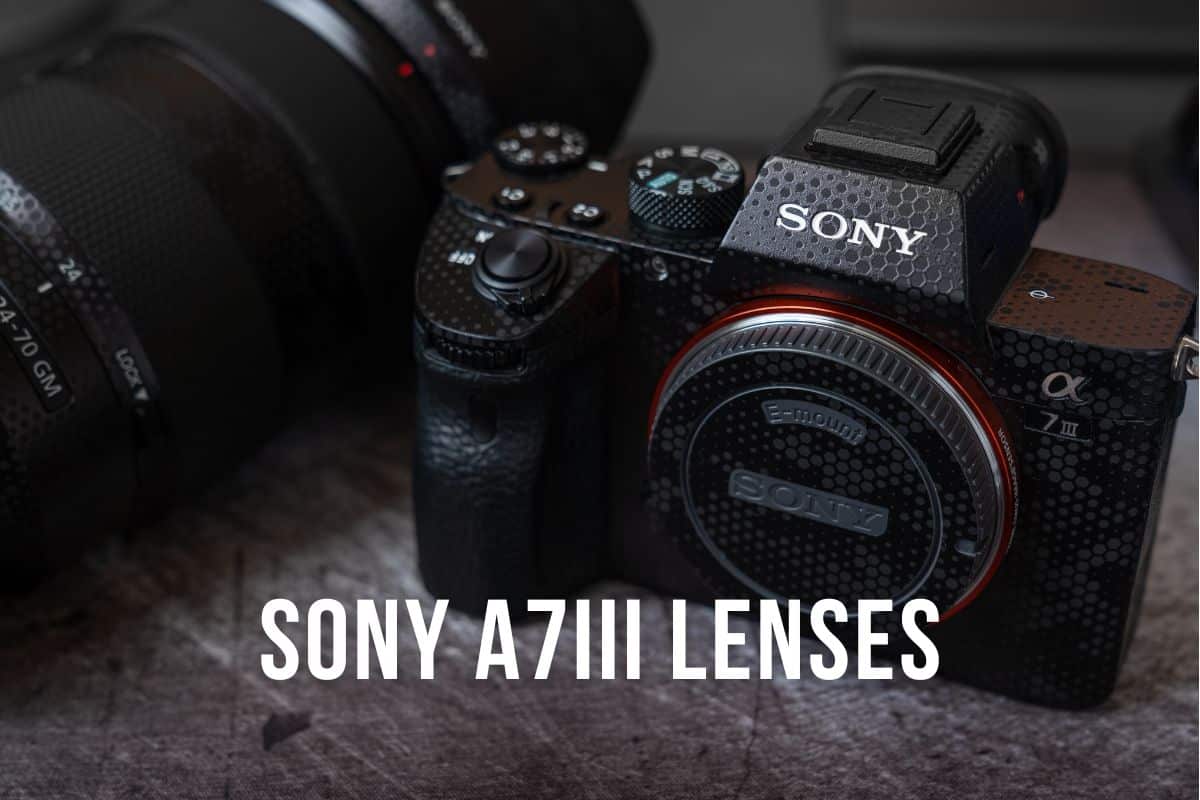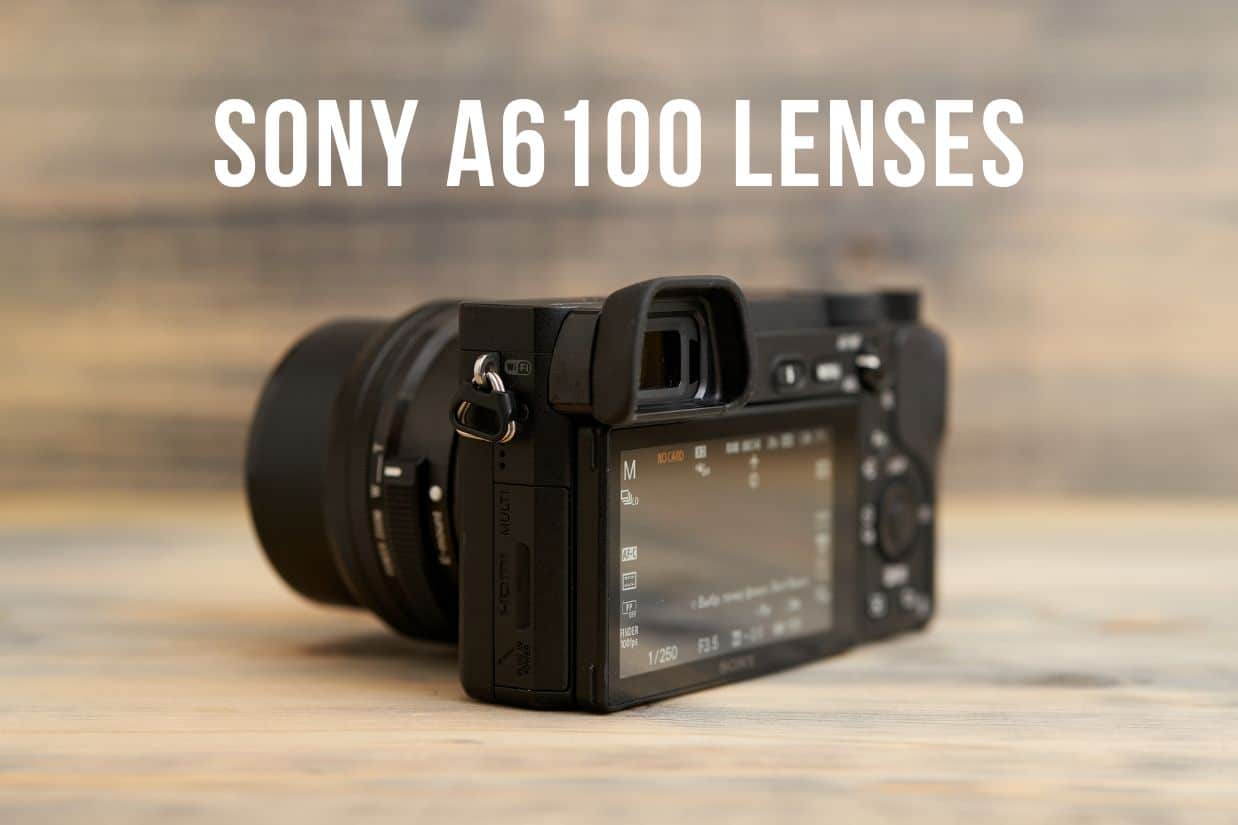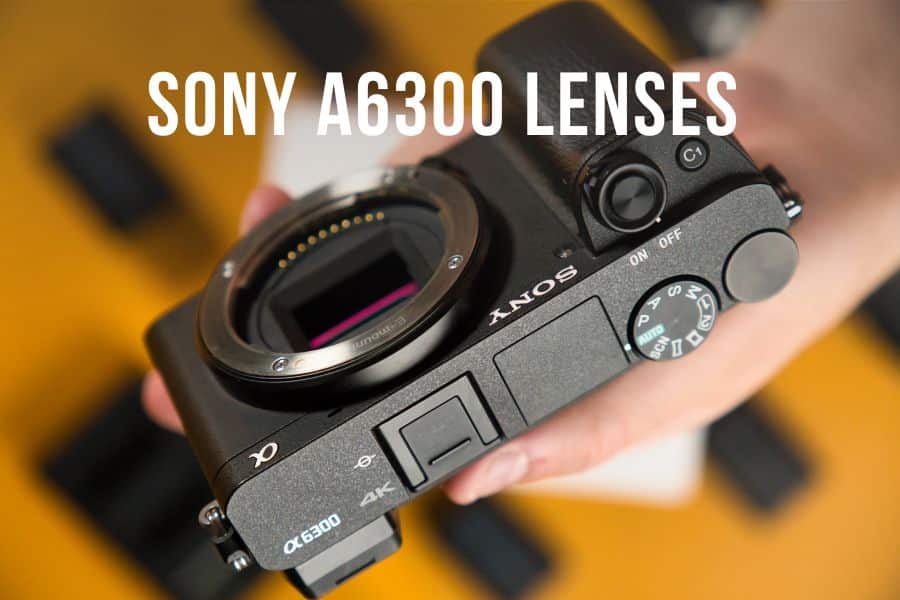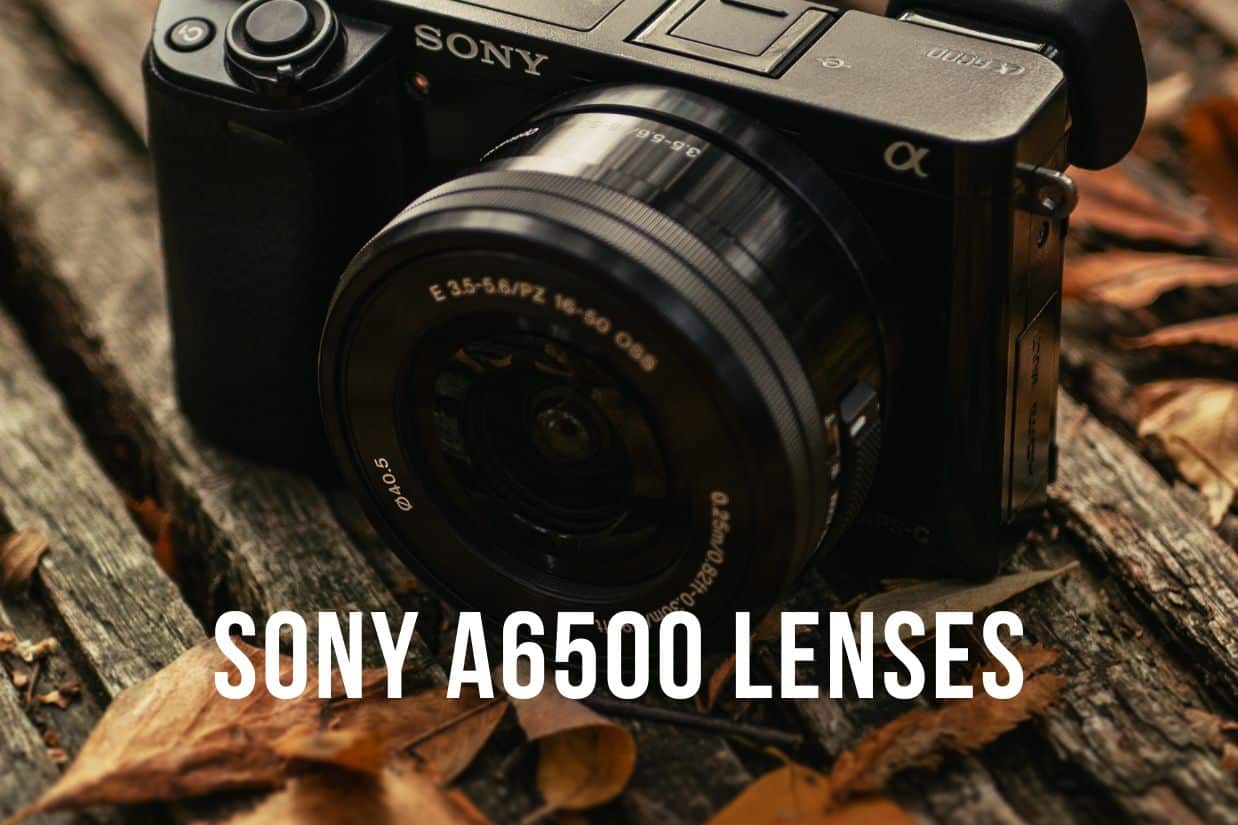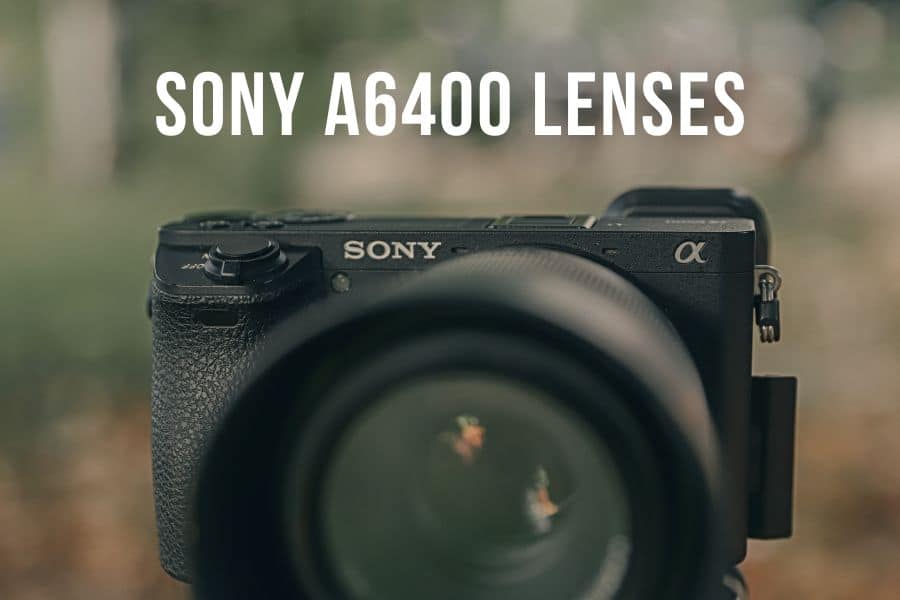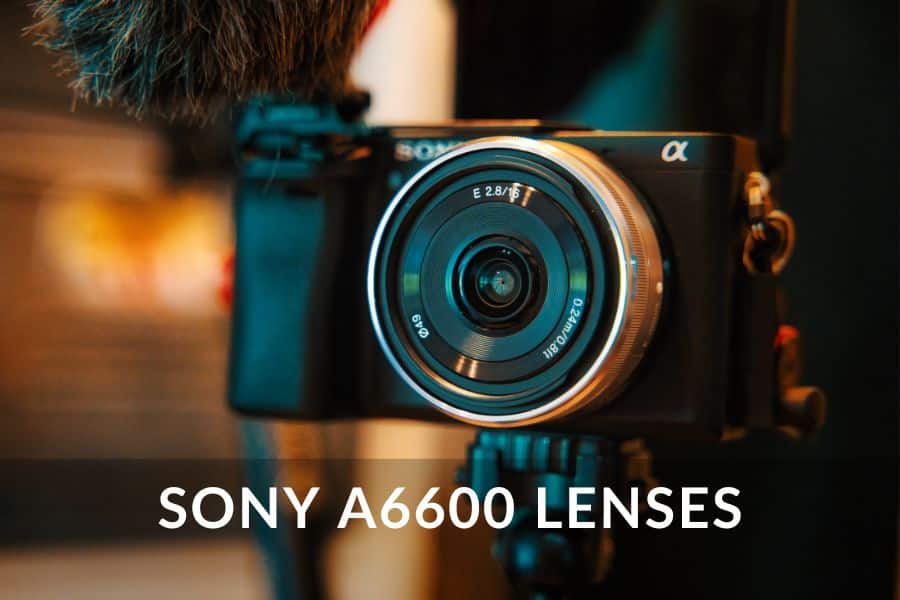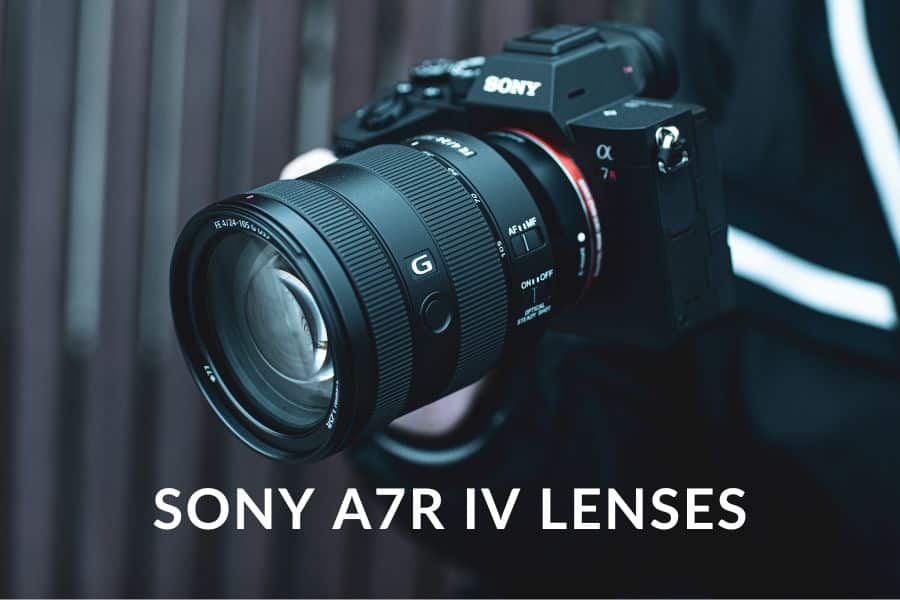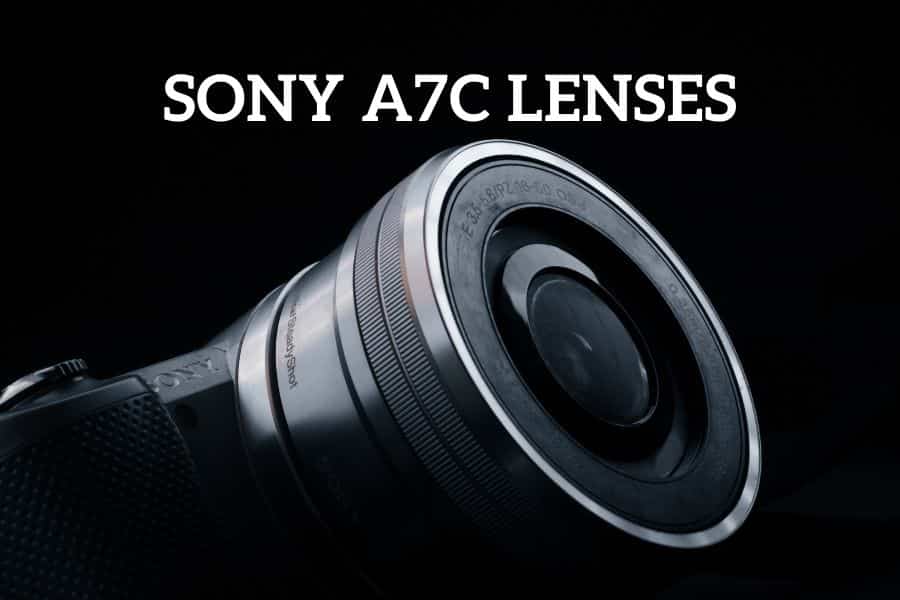Sony E-mount lenses
| Lens name | Link | Rating | Price USD | Release year | |||
|---|---|---|---|---|---|---|---|
| Sony E 11mm F1.8 APS-C | Amazon | APS-C | E-mount | Prime | 4.6 (164) | 549 | 2022 |
| Sony FE 14mm f1.8 GM | Amazon | FF | E-mount | Prime | 4.6 (104) | 1199 | 2021 |
| Sony E 15mm F1.4 G APS-C | Amazon | APS-C | E-mount | Prime | 4.7 (91) | 749 | 2022 |
| Sony E 16mm F2.8 APS-C | Amazon | APS-C | E-mount | Prime | 4.2 (344) | 249 | 2010 |
| Sony FE 20mm f1.8 G | Amazon | FF | E-mount | Prime | 4.7 (584) | 899 | 2020 |
| Sony E 20mm F2.8 | Amazon | APS-C | E-mount | Prime | 4.3 (290) | 349 | 2013 |
| Sony FE 24mm f1.4 GM | Amazon | FF | E-mount | Prime | 4.7 (568) | 955 | 2018 |
| Sony Sonnar E 24mm F1.8 ZA APS-C | Amazon | APS-C | E-mount | Prime | 3.8 (144) | 388 | 2011 |
| Sony FE 24mm f2.8 G | Amazon | FF | E-mount | Prime | 4.5 (104) | 599 | 2021 |
| Sony FE 28mm f2.0 | Amazon | FF | E-mount | Prime | 4.4 (367) | 449 | 2015 |
| Sony E 30mm F3.5 Macro APS-C | Amazon | APS-C | E-mount | Prime | 4.5 (308) | 159 | 2011 |
| Sony E 35mm F1.8 OSS APS-C | Amazon | APS-C | E-mount | Prime | 4.7 (1777) | 304 | 2012 |
| Sony Distagon FE 35mm F1.4 ZA | Amazon | FF | E-mount | Prime | 4.5 (124) | 999 | 2015 |
| Sony FE 35mm f1.4 GM | Amazon | FF | E-mount | Prime | 4.7 (256) | 1299 | 2021 |
| Sony FE 35mm f1.8 | Amazon | FF | E-mount | Prime | 4.7 (1058) | 599 | 2019 |
| Sony Sonnar FE 35mm F2.8 ZA | Amazon | FF | E-mount | Prime | 4.6 (184) | 498 | 2013 |
| Sony FE 40mm f2.5 G | Amazon | FF | E-mount | Prime | 4.7 (307) | 599 | 2021 |
| Sony FE 50mm f1.2 GM | Amazon | FF | E-mount | Prime | 4.9 (217) | 1899 | 2021 |
| Sony FE 50mm f1.4 GM | Amazon | FF | E-mount | Prime | 4.6 (60) | 1299 | 2023 |
| Sony E 50 mm F1.8 OSS APS-C | Amazon | APS-C | E-mount | Prime | 4.7 (2127) | 348 | 2013 |
| Sony FE 50mm f1.4 ZA Planar | Amazon | FF | E-mount | Prime | 4.1 (104) | 999 | 2017 |
| Sony FE 50mm f1.8 | Amazon | FF | E-mount | Prime | 4.6 (5659) | 249 | 2016 |
| Sony FE 50mm f2.8 Macro | Amazon | FF | E-mount | Prime | 4.3 (118) | 549 | 2016 |
| Sony FE 50mm f2.5 G | Amazon | FF | E-mount | Prime | 4.5 (106) | 599 | 2021 |
| Sony FE 55mm f1.8 ZA Sonnar | Amazon | FF | E-mount | Prime | 4.6 (460) | 999 | 2013 |
| Sony FE 85mm f1.4 GM | Amazon | FF | E-mount | Prime | 4.4 (181) | 1799 | 2016 |
| Sony FE 85mm f1.8 | Amazon | FF | E-mount | Prime | 4.8 (755) | 599 | 2019 |
| Sony FE 90mm f2.8 Macro G OSS | Amazon | FF | E-mount | Prime | 4.7 (476) | 1099 | 2015 |
| Sony FE 100mm f2.8 STF GM OSS | Amazon | FF | E-mount | Prime | 4.1 (12) | 1499 | 2017 |
| Sony FE 135mm f1.8 GM | Amazon | FF | E-mount | Prime | 4.8 (112) | 2099 | 2019 |
| Sony FE 300mm f2.8 GM OSS | Amazon | FF | E-mount | Prime | 5.0 (3) | 5999 | 2023 |
| Sony FE 400mm f2.8 GM OSS | Amazon | FF | E-mount | Prime | 5.0 (10) | 11999 | 2018 |
| Sony FE 600mm f4 GM OSS | Amazon | FF | E-mount | Prime | 4.7 (5) | 12999 | 2019 |
| Sony E 10–18 mm F4 OSS APS-C | Amazon | APS-C | E-mount | Zoom | 4.6 (312) | 397 | 2012 |
| Sony E PZ 10-20mm F4 G APS-C | Amazon | APS-C | E-mount | Zoom | 4.6 (68) | 749 | 2022 |
| Sony FE 12-24mm f2.8 GM | Amazon | FF | E-mount | Zoom | 4.7 (932) | 2899 | 2020 |
| Sony FE 12-24mm f4 G | Amazon | FF | E-mount | Zoom | 4.5 (76) | 1774 | 2017 |
| Sony FE 16-35mm f2.8 GM | Amazon | FF | E-mount | Zoom | 4.7 (932) | 1899 | 2017 |
| Sony FE 16-35mm f2.8 GM II | Amazon | FF | E-mount | Zoom | 4.5 (15) | 2299 | 2023 |
| Sony FE PZ 16-35mm F4 G | Amazon | FF | E-mount | Zoom | 4.5 (105) | 1099 | 2022 |
| Sony 16-35mm f4 ZA Vario-Sonnar OSS | Amazon | FF | E-mount | Zoom | 4.5 (248) | 999 | 2014 |
| Sony E PZ 16–50 mm F3.5–5.6 OSS | Amazon | APS-C | E-mount | Zoom | 4.3 (228) | 179 | 2019 |
| Sony E 16–55mm F2.8 G APS-C | Amazon | APS-C | E-mount | Zoom | 4.6 (188) | 1059 | 2019 |
| Sony 16-70mm f4 Vario-Tessar T* ZA OSS | Amazon | APS-C | E-mount | Zoom | 4.1 (142) | 798 | 2013 |
| Sony E PZ 18–105 mm F4 G OSS | Amazon | APS-C | E-mount | Zoom | 4.5 (2346) | 419 | 2013 |
| Sony E 18-135mm F3.5-5.6 OSS | Amazon | APS-C | E-mount | Zoom | 4.6 (359) | 649 | 2018 |
| Sony E 18–200 mm F3.5-6.3 OSS | Amazon | APS-C | E-mount | Zoom | 4.3 (133) | 749 | 2010 |
| Sony FE 20-70mm F4 G | Amazon | FF | E-mount | Zoom | 4.4 (44) | 1099 | 2023 |
| Sony FE 24-50mm F2.8 G Compact | Amazon | FF | E-mount | Zoom | new | 1099 | 2024 |
| Sony FE 24-70mm f2.8 GM | Amazon | FF | E-mount | Zoom | 4.7 (932) | 1599 | 2016 |
| Sony FE 24-70mm f2.8 GM II | Amazon | FF | E-mount | Zoom | 4.7 (188) | 2299 | 2022 |
| Sony 24-70mm f4 ZA Vario-Tessar OSS | Amazon | FF | E-mount | Zoom | 4.4 (293) | 899 | 2013 |
| Sony FE 24-105mm f4 G OSS | Amazon | FF | E-mount | Zoom | 4.7 (424) | 1199 | 2017 |
| Sony FE 24-240mm f3.5-f6.3 OSS | Amazon | FF | E-mount | Zoom | 4.5 (285) | 1049 | 2015 |
| Sony FE 28-60mm f4-f5.6 | Amazon | FF | E-mount | Zoom | 4.5 (53) | 499 | 2020 |
| Sony FE 28-70mm f3.5-5.6 OSS | Amazon | FF | E-mount | Zoom | 4.3 (236) | 279 | 2013 |
| Sony FE PZ 28-135mm F4 G OSS | Amazon | FF | E-mount | Zoom | 4.5 (41) | 2499 | 2014 |
| Sony E 55–210 mm F4.5-6.3 OSS | Amazon | APS-C | E-mount | Zoom | 4.6 (1467) | 148 | 2014 |
| Sony FE 70-200mm f2.8 GM OSS | Amazon | FF | E-mount | Zoom | 4.6 (196) | 1999 | 2016 |
| Sony FE 70-200mm f2.8 GM OSS II | Amazon | FF | E-mount | Zoom | 4.7 (932) | 2459 | 2021 |
| Sony FE 70-200mm f4 G OSS | Amazon | FF | E-mount | Zoom | 4.4 (257) | 837 | 2014 |
| Sony FE 70-200mm f4 Macro G OSS II | Amazon | FF | E-mount | Zoom | 4.6 (40) | 1699 | 2023 |
| Sony FE 70-300mm f4.5-5.6 G OSS | Amazon | FF | E-mount | Zoom | 4.5 (453) | 714 | 2016 |
| Sony E 70–350 mm F4.5–6.3 G OSS | Amazon | APS-C | E-mount | Zoom | 4.7 (432) | 999 | 2019 |
| Sony FE 100-400mm f4.5-5.6 GM OSS | Amazon | FF | E-mount | Zoom | 4.7 (211) | 2399 | 2017 |
| Sony FE 200-600mm f5.6-6.3 G OSS | Amazon | FF | E-mount | Zoom | 4.7 (405) | 1999 | 2019 |
Sigma E-mount lenses
| Lens name | Link | Rating | Price USD | Release year | |||
|---|---|---|---|---|---|---|---|
| Sigma 14mm f1.4 DG DN Art | Amazon | FF | E-mount | Prime | 4.7 (11) | 1599 | 2023 |
| Sigma 14mm f1.8 DG HSM Art | Amazon | FF | E-mount | Prime | 4.4 (45) | 1299 | 2018 |
| Sigma 15mm f1.4 Fisheye DG DN Art | Amazon | FF | E-mount | Prime | new | 1999 | 2024 |
| Sigma 16mm f1.4 DC DN | Amazon | APS-C | E-mount | Prime | 4.8 (5212) | 394 | 2017 |
| Sigma 17mm f4 DG DN | Amazon | FF | E-mount | Prime | 4.7 (4) | 599 | 2023 |
| Sigma 20mm f1.4 DG HSM Art | Amazon | FF | E-mount | Prime | 4.3 (97) | 899 | 2018 |
| Sigma 20mm f1.4 DG DN Art | Amazon | FF | E-mount | Prime | 4.4 (28) | 889 | 2022 |
| Sigma 20mm f2 DG DN | Amazon | FF | E-mount | Prime | 4.5 (21) | 689 | 2022 |
| Sigma 23mm f1.4 DC DN C | Amazon | APS-C | E-mount | Prime | 4.5 (19) | 549 | 2023 |
| Sigma 24mm f1.4 DG HSM Art | Amazon | FF | E-mount | Prime | 4.4 (202) | 499 | 2018 |
| Sigma 24mm f1.4 DG DN Art | Amazon | FF | E-mount | Prime | 4.7 (26) | 799 | 2022 |
| Sigma 24mm f2 DG DN | Amazon | FF | E-mount | Prime | 4.5 (25) | 639 | 2021 |
| Sigma 24mm f3.5 DG DN | Amazon | FF | E-mount | Prime | 4.7 (38) | 549 | 2020 |
| Sigma 28mm f1.4 DG HSM Art | Amazon | FF | E-mount | Prime | 4.9 (5) | 779 | 2019 |
| Sigma 30mm f1.4 DC DN | Amazon | APS-C | E-mount | Prime | 4.8 (4490) | 284 | 2016 |
| Sigma 35mm f1.2 DG DN Art | Amazon | FF | E-mount | Prime | 4.3 (89) | 1499 | 2019 |
| Sigma 35mm F1.4 DG HSM Art | Amazon | FF | E-mount | Prime | 4.7 (663) | 779 | 2018 |
| Sigma 35mm f1.4 DG DN Art | Amazon | FF | E-mount | Prime | 4.7 (294) | 749 | 2021 |
| Sigma 35mm f2 DG DN | Amazon | FF | E-mount | Prime | 4.4 (100) | 639 | 2020 |
| Sigma 40mm f1.4 DG HSM Art | Amazon | FF | E-mount | Prime | 4.5 (142) | 799 | 2018 |
| Sigma 45mm f2.8 DG DN | Amazon | FF | E-mount | Prime | 4.1 (74) | 309 | 2019 |
| Sigma 50mm F1.2 DG DN Art | Amazon | FF | E-mount | Prime | new | 1399 | 2024 |
| Sigma 50mm f1.4 DG HSM Art | Amazon | FF | E-mount | Prime | 4.7 (1601) | 799 | 2014 |
| Sigma 50mm f1.4 DG DN | Amazon | FF | E-mount | Prime | 4.8 (45) | 849 | 2023 |
| Sigma 50mm f2 DG DN | Amazon | FF | E-mount | Prime | 5.0 (2) | 639 | 2023 |
| Sigma 56mm f1.4 DC DN | Amazon | APS-C | E-mount | Prime | 4.8 (1615) | 479 | 2018 |
| Sigma 65mm f2 DG DN | Amazon | FF | E-mount | Prime | 4.5 (64) | 699 | 2020 |
| Sigma 70mm f2.8 DG Macro Art | Amazon | FF | E-mount | Prime | 4.5 (354) | 338 | 2018 |
| Sigma 85mm f1.4 DG HSM Art | Amazon | FF | E-mount | Prime | 4.6 (849) | 1049 | 2016 |
| Sigma 85mm f1.4 DG DN Art | Amazon | FF | E-mount | Prime | 4.7 (620) | 1199 | 2020 |
| Sigma 90mm f2.8 DG DN | Amazon | FF | E-mount | Prime | 4.6 (45) | 639 | 2021 |
| Sigma 105mm f1.4 DG HSM Art | Amazon | FF | E-mount | Prime | 4.6 (149) | 1589 | 2018 |
| Sigma 105mm f2.8 DG DN Macro | Amazon | FF | E-mount | Prime | 4.5 (408) | 789 | 2020 |
| Sigma 135mm f1.8 DG HSM Art | Amazon | FF | E-mount | Prime | 4.5 (128) | 1199 | 2018 |
| Sigma 500mm f5.6 DG DN OS Sport | Amazon | FF | E-mount | Prime | new | 2999 | 2024 |
| Sigma 10-18mm f2.8 DC DN | Amazon | APS-C | E-mount | Zoom | 4.9 (23) | 589 | 2023 |
| Sigma 14-24mm f2.8 DG DN Art | Amazon | FF | E-mount | Zoom | 4.5 (397) | 1399 | 2019 |
| Sigma 16-28mm f2.8 DG DN | Amazon | FF | E-mount | Zoom | 4.5 (78) | 879 | 2022 |
| Sigma 18-50mm DC DN | Amazon | APS-C | E-mount | Zoom | 4.7 (814) | 549 | 2021 |
| Sigma 24-70mm f2.8 DG DN Art | Amazon | FF | E-mount | Zoom | 4.8 (2123) | 1099 | 2019 |
| Sigma 28-70mm f2.8 DG DN | Amazon | FF | E-mount | Zoom | 4.6 (464) | 899 | 2021 |
| Sigma 70-200mm f2.8 DG DN OS | Amazon | FF | E-mount | Zoom | 4.9 (13) | 1495 | 2023 |
| Sigma 60-600mm f4.5-6.3 DG DN OS | Amazon | FF | E-mount | Zoom | 4.7 (10) | 1999 | 2023 |
| Sigma 100-400mm f5-6.3 DG DN OS | Amazon | FF | E-mount | Zoom | 4.7 (527) | 949 | 2020 |
| Sigma 150-600mm f5-6.3 DG DN OS | Amazon | FF | E-mount | Zoom | 4.5 (136) | 1499 | 2021 |
Tamron E-mount lenses
| Lens name | Link | Rating | Price USD | Release year | |||
|---|---|---|---|---|---|---|---|
| Tamron E 20mm f2.8 Di III OSD M 1:2 | Amazon | FF | E-mount | Prime | 4.4 (253) | 299 | 2019 |
| Tamron E 24mm f2.8 Di III OSD M 1:2 | Amazon | FF | E-mount | Prime | 4.4 (258) | 249 | 2019 |
| Tamron E 35mm f2.8 Di III OSD M 1:2 | Amazon | FF | E-mount | Prime | 4.5 (259) | 249 | 2019 |
| Tamron E 11-20mm f2.8 Di III-A RXD | Amazon | APS-C | E-mount | Zoom | 4.4 (80) | 829 | 2021 |
| Tamron E 17-28mm f2.8 Di III RXD | Amazon | FF | E-mount | Zoom | 4.7 (628) | 899 | 2019 |
| Tamron E 17-50mm f4 Di III VXD | Amazon | FF | E-mount | Zoom | 4.0 (2) | 699 | 2023 |
| Tamron E 17-70mm f2.8 Di III-A VC RXD | Amazon | APS-C | E-mount | Zoom | 4.7 (754) | 699 | 2020 |
| Tamron E 18-200mm f3.5-6.3 Di III VC | Amazon | APS-C | E-mount | Zoom | 4.2 (299) | 350 | 2012 |
| Tamron E 18-300mm f3.5-6.3 Di III-A VC VXD | Amazon | APS-C | E-mount | Zoom | 4.4 (132) | 699 | 2021 |
| Tamron E 20-40mm f2.8 Di III VXD | Amazon | FF | E-mount | Zoom | 4.5 (52) | 699 | 2022 |
| Tamron E 28-75mm f2.8 Di III VXD G2 | Amazon | FF | E-mount | Zoom | 4.6 (320) | 899 | 2021 |
| Tamron E 28-200mm f2.8-5.6 Di III RXD | Amazon | FF | E-mount | Zoom | 4.6 (532) | 799 | 2020 |
| Tamron E 35-150mm f2-2.8 Di III VXD | Amazon | FF | E-mount | Zoom | 4.5 (97) | 1899 | 2021 |
| Tamron E 50-400mm f4.5-6.3 Di III VC VXD | Amazon | FF | E-mount | Zoom | 4.5 (34) | 1299 | 2022 |
| Tamron E 70-180mm f2.8 Di III VXD | Amazon | FF | E-mount | Zoom | 4.6 (590) | 1199 | 2020 |
| Tamron E 70-180mm f2.8 Di III VXD G2 | Amazon | FF | E-mount | Zoom | 3.9 (7) | 1299 | 2023 |
| Tamron E 70-300mm f4.5-6.3 Di III RXD | Amazon | FF | E-mount | Zoom | 4.6 (493) | 549 | 2020 |
| Tamron E 150-500mm f5-6.7 Di III VXD | Amazon | FF | E-mount | Zoom | 4.3 (153) | 1399 | 2021 |
Articles about Sony camera lenses
Sony E-mount lenses List [full-frame & APS-C]
A comprehensive list of Sony E-mount full-frame and APS-C lenses. This article aims to provide a bri…
12 Best lenses for Sony a7 IV [updated 2024]
The Sony a7 IV is a top-rated camera that I also use, and I am super pleased with its performance. I…
11 Best travel lenses for Sony a7III [updated 2024]
What are the best travel lenses for Sony a7III? That’s a good question because there isn’…
16 Best lenses for Sony a7III [updated 2024]
The Sony a7III has quickly become popular among photographers thanks to its exceptional performance,…
10 Best lenses for Sony a6100 [updated 2024]
Are you looking for the best lenses for Sony a6100 that suit you? Here is a list featuring top-notch…
10 Best lenses for Sony a6300 [updated 2024]
If you’re searching for the best lenses for Sony a6300, then we have something here for you! W…
15 Best lenses for Sony a6500 [updated 2024]
We’ve compiled our list of the highest quality and most cost-effective choices when selecting …
14 Best lenses for Sony a6400 [updated 2024]
With so many options on the market, it’s often hard for photographers to choose the perfect le…
15 Best lenses for Sony a6000 [updated 2024]
With so many different options available, it can be difficult to decide which lens is best for you. …
13 Best lenses for Sony a6600 [updated 2024]
Finding the best lenses for Sony’s A6600 camera can be difficult. To help you make an informed…
13 Best lenses for Sony a7R IV [updated 2024]
The Sony a7R IV is an ideal choice for photographers at any level, especially those looking to advan…
15 Best Lenses for Sony a7c [updated 2024]
Sony a7c is a full-frame camera for more advanced photographers. However, it would also be a camera …
Sony lenses
Sony offers a wide range of lenses for its mirrorless cameras: full-frame (FE) and APS-C format lenses.
Full-frame and APS-C format Sony lenses are designed to work with different sensor sizes and camera systems, and understanding the differences between the two can be important when choosing the right lens for your camera.
Full-frame Sony lenses are designed to work with full-frame sensors, which are the same size as traditional 35mm film. Full-frame sensors offer a larger surface area than APS-C sensors, meaning they can capture more light and detail. Full-frame lenses are typically more expensive than APS-C lenses and tend to be larger and heavier due to the larger image circle required to cover the full sensor.
APS-C format Sony lenses, on the other hand, are designed to work with APS-C sensors, which are smaller than full-frame sensors. APS-C sensors have a crop factor of 1.5x or 1.6x, depending on the camera manufacturer, which means that they capture a smaller portion of the image circle produced by the lens. APS-C lenses are typically smaller and lighter than full-frame lenses, and are often less expensive.
While full-frame lenses can be used on APS-C cameras, the crop factor means that the effective focal length of the lens will be multiplied by the crop factor. For example, a 50mm lens used on an APS-C camera with a crop factor of 1.5x would have an effective focal length of 75mm. This can be advantageous for certain types of photography, such as wildlife or sports, where a longer effective focal length can be useful.
APS-C lenses, on the other hand, cannot be used on full-frame cameras without vignetting, as the image circle produced by the lens is too small to cover the entire sensor.
Overall, the choice between full-frame and APS-C format Sony lenses depends on several factors, including your camera system, your shooting style, and your budget. While full-frame lenses are generally considered to be of higher quality, they may not always be necessary for every type of photography, and APS-C Sony lenses can be a more affordable and lightweight alternative.
